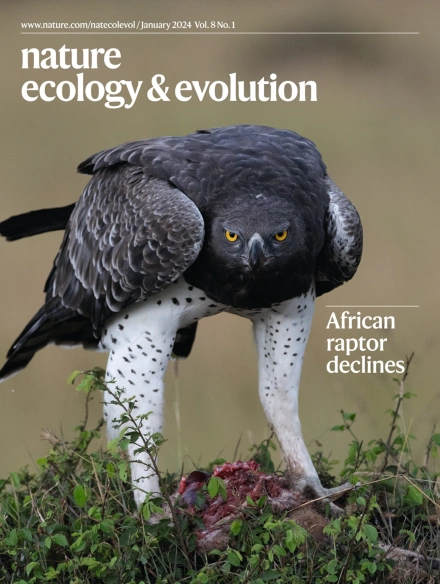Cross-kingdom comparative genomics reveal the metabolic potential of fungi for lignin turnover in deadwood
IF 13.9
1区 生物学
Q1 ECOLOGY
引用次数: 0
Abstract
Deadwood is a major carbon source in forests, and yet the fate of this carbon remains a gap in our understanding of global carbon cycling. Lignin, the most recalcitrant biopolymer in wood, is mainly decayed through extracellular enzymatic and chemical processes initiated by white-rot fungi. However, the intracellular conversion of lignin decay products has been overlooked in the fungal kingdom. Here we integrate comparative genomic and phylogenetic analyses to understand the distribution and evolution of enzymes responsible for modifying lignin-related aromatic compounds—such as decarboxylases, hydroxylases, dioxygenases and other downstream ring-cleavage enzymes—that funnel carbon to central metabolism across the bacterial and the fungal kingdoms. We demonstrate that specific fungal lineages conserve these enzyme families, and that the abilities to enzymatically depolymerize lignin and catabolize lignin-related aromatic compounds are not necessarily coupled. Our analyses also reveal an expanded substrate specificity of aromatic ring-cleavage enzymes during fungal evolution, as well as a clade of extracellular enzymes among them, broadening the spatial range of these biochemical capabilities. Together, our results highlight a large diversity of fungal enzymes and hosts that warrant further investigation for inclusion into carbon cycling models and biotechnological applications for the conversion of aromatic compounds. This study uses comparative genomics and phylogenetics to analyse the distribution and evolution of key enzymes involved in the catabolism of lignin-related aromatic compounds in the bacterial and fungal kingdoms.


跨界比较基因组学揭示了真菌对枯木中木质素周转的代谢潜力
枯木是森林中主要的碳源,然而这些碳的命运在我们对全球碳循环的理解中仍然是一个空白。木质素是木材中最顽固的生物聚合物,主要通过白腐真菌引发的细胞外酶和化学过程进行腐烂。然而,木质素腐烂产物的细胞内转化在真菌界一直被忽视。在这里,我们整合了比较基因组学和系统发育分析,以了解负责修饰木质素相关芳香化合物的酶的分布和进化,如脱羧酶、羟化酶、双加氧酶和其他下游环裂解酶,这些酶将碳输送到细菌和真菌王国的中心代谢。我们证明了特定的真菌谱系保存了这些酶家族,并且酶解木质素和分解木质素相关芳香族化合物的能力不一定是耦合的。我们的分析还揭示了芳香环裂解酶在真菌进化过程中的底物特异性,以及其中的细胞外酶的进化,拓宽了这些生化能力的空间范围。总之,我们的研究结果突出了真菌酶和宿主的多样性,值得进一步研究,以纳入碳循环模型和芳香族化合物转化的生物技术应用。
本文章由计算机程序翻译,如有差异,请以英文原文为准。
求助全文
约1分钟内获得全文
求助全文
来源期刊

Nature ecology & evolution
Agricultural and Biological Sciences-Ecology, Evolution, Behavior and Systematics
CiteScore
22.20
自引率
2.40%
发文量
282
期刊介绍:
Nature Ecology & Evolution is interested in the full spectrum of ecological and evolutionary biology, encompassing approaches at the molecular, organismal, population, community and ecosystem levels, as well as relevant parts of the social sciences. Nature Ecology & Evolution provides a place where all researchers and policymakers interested in all aspects of life's diversity can come together to learn about the most accomplished and significant advances in the field and to discuss topical issues. An online-only monthly journal, our broad scope ensures that the research published reaches the widest possible audience of scientists.
 求助内容:
求助内容: 应助结果提醒方式:
应助结果提醒方式:


